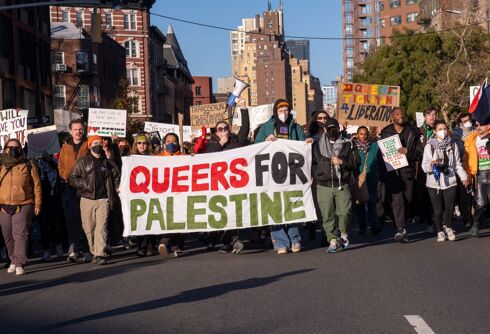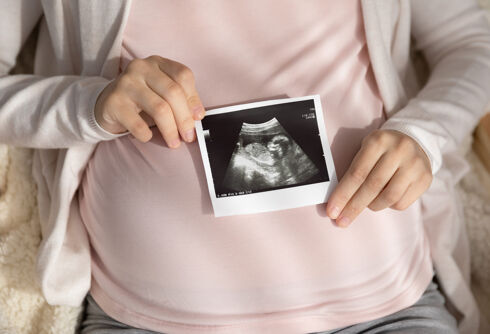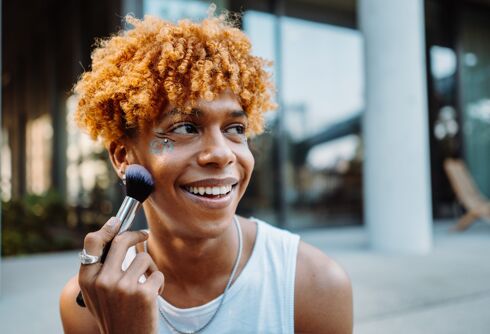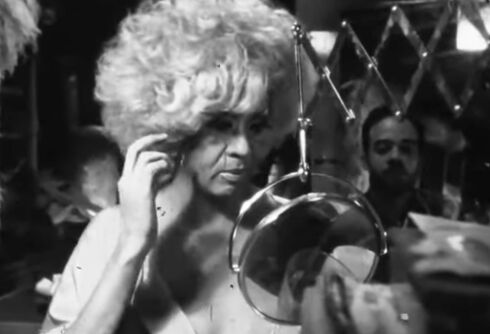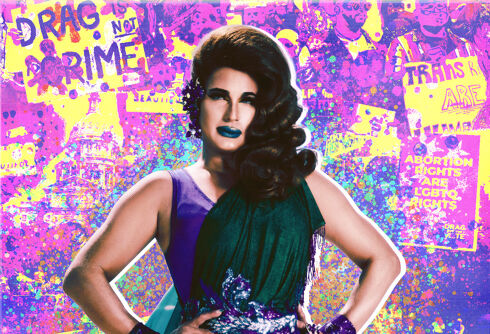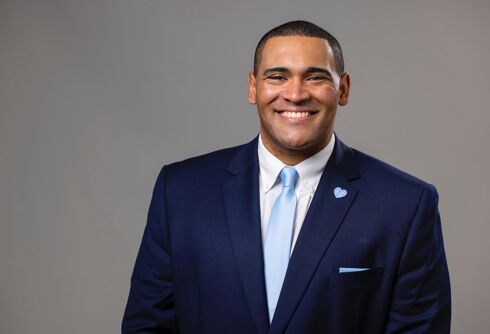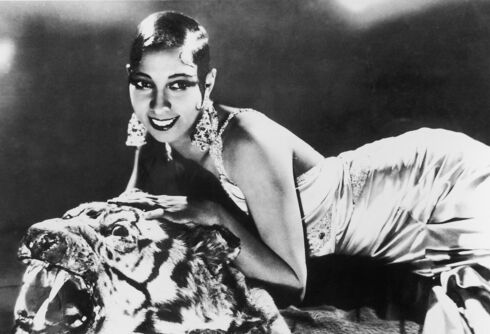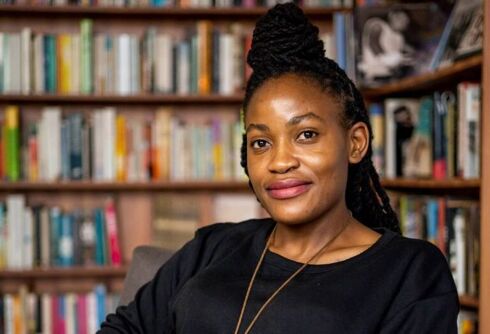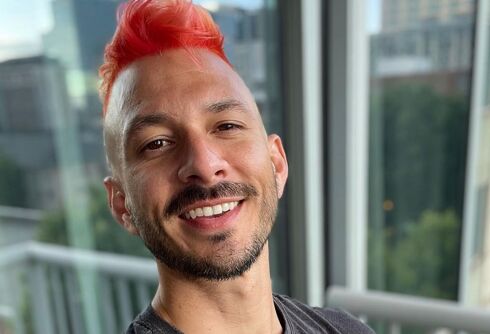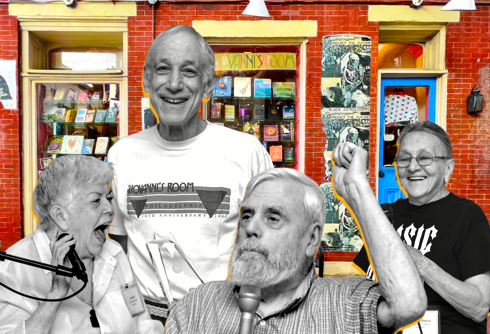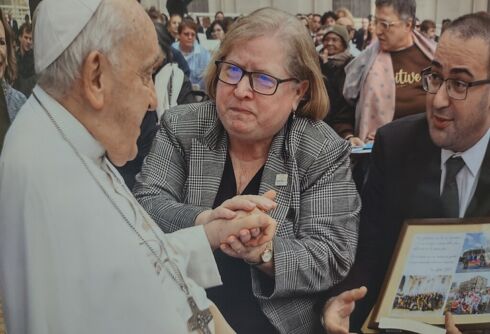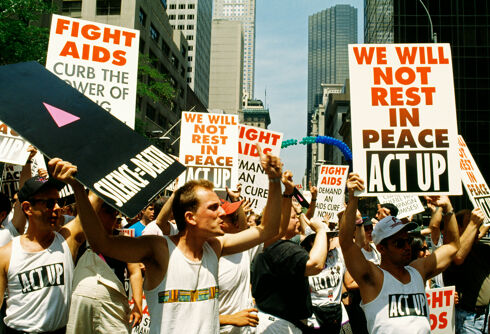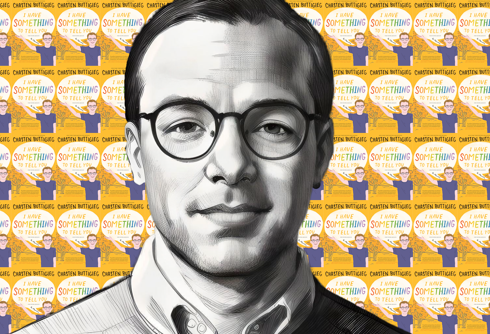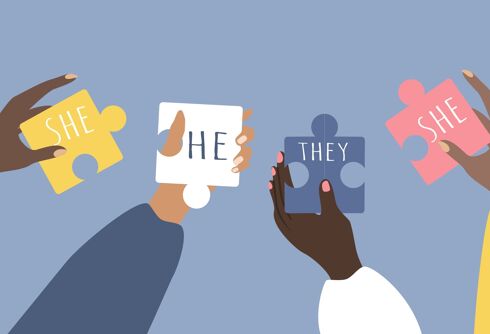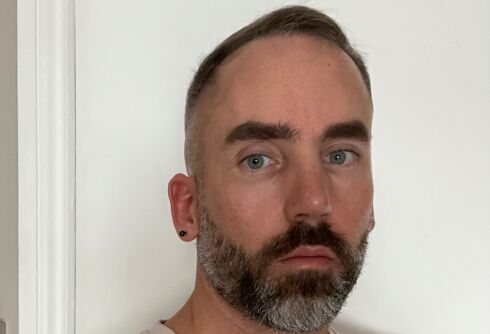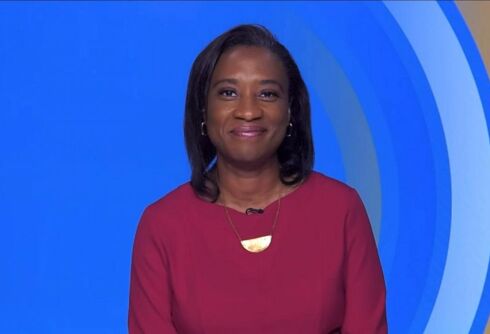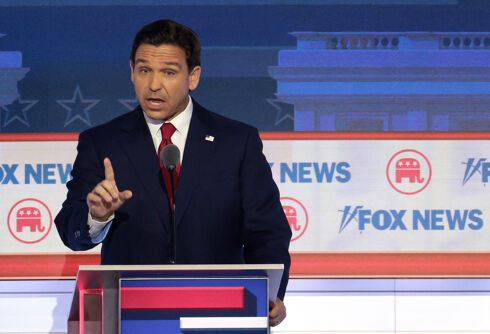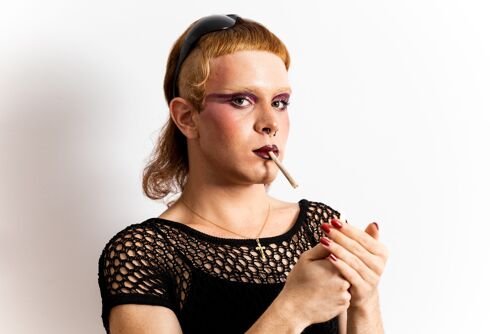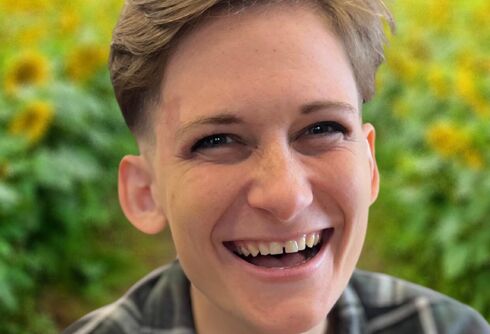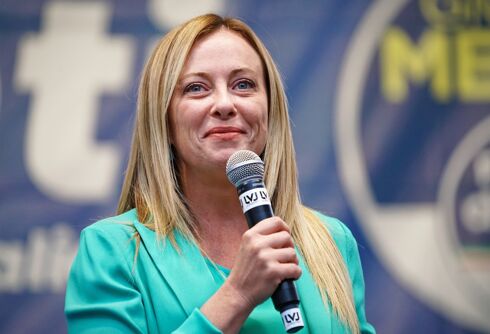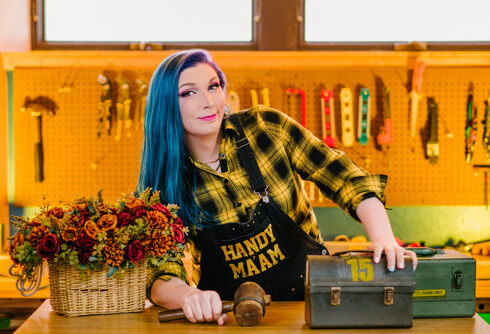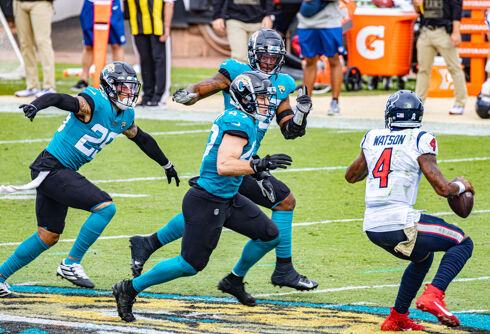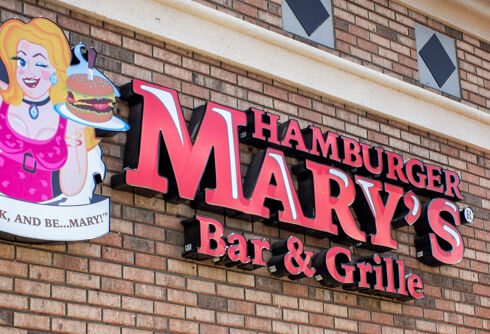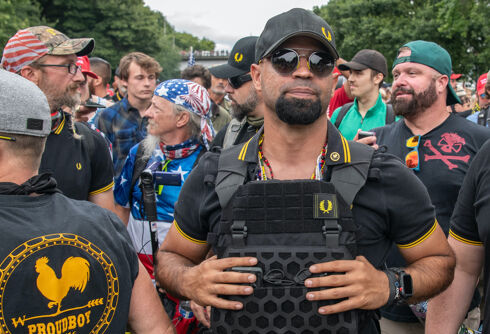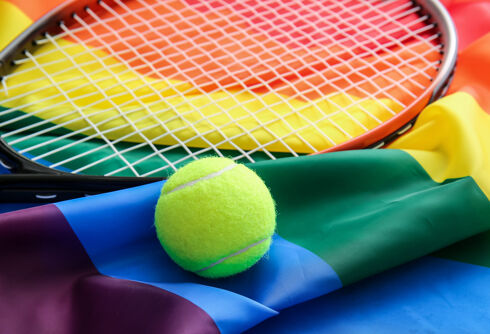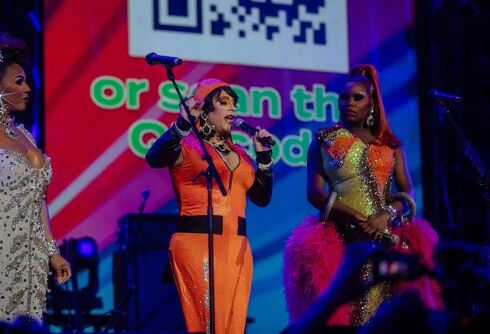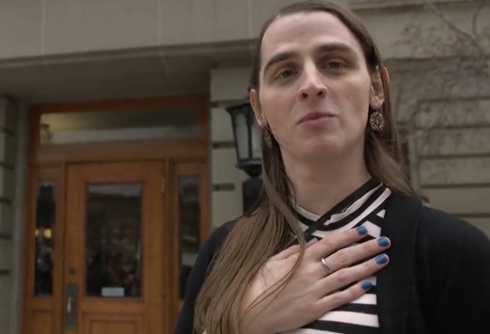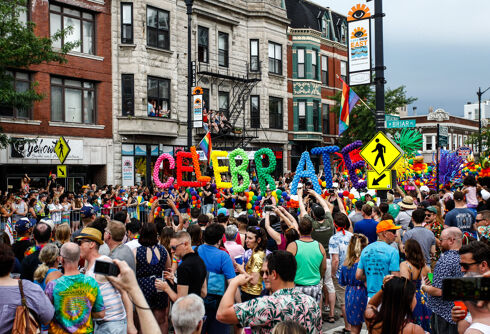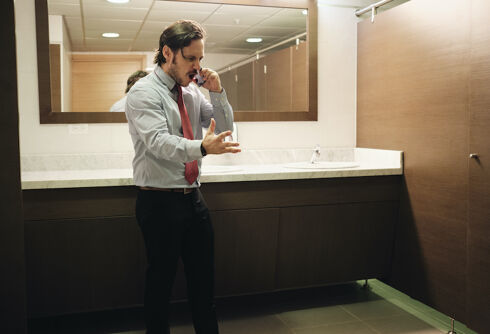Transgender actress Patti Harrison recently appeared in a comedic advertisement for the dating app Hinge’s “Designed to be Deleted” campaign. In the ad, Harrison plays an angelic receptionist at the Gate of the Afterlife who welcomes deleted Hinge app icons after newly and happily united couples delete the app from their phones.
While the ad is comical, online dating apps continue to provide an uneven experience for trans, nonbinary, and genderfluid users. Most dating websites and smartphone apps didn’t initially offer gender descriptions for these users to authentically present themselves to others. Even with expanded gender presentation options, non-cisgender users say that ignorance and transphobia continue to make online dating feel unsafe.
Related:
Dating as a nonbinary person can often feel impossible. But I won’t settle for less than I deserve.
It’s easy to see the difference with some of the partners I’ve had this year after simply raising my standards for how I wanted to be treated.
Never Miss a Beat
Subscribe to our newsletter to stay ahead of the latest LGBTQ+ political news and insights.
A brief (incomplete) history of LGBTQ+ online dating
The earliest days of LGBTQ+ online dating harken back to the late 80s and early 90s, when gay men used dial-up modems to connect through bulletin board systems (BBSs) like Backroom and Gay.net. Back then, some lesbians also used an e-mail listserv called Sappho and, later, the website lesbian.org, which contained personals, discussion forums, web links for lesbian-oriented non-profits, and even a lesbian literary journal called Sapphic Ink.
In the early to late 90s, web services like Compuserve and America Online (AOL) provided real-time M4M, W4W, and “transexual” chatrooms where queer love-seekers could connect, talk dirty, and spend hours uploading and downloading pixelated photographs of themselves via very-slow internet connections.
“I think LGBTQ+ people were always really early adopters to online dating,” Michael Kaye, the one-time director of brand marketing and communications for OkCupid told QSaltLake. “Speaking from experience, we are limited to the safe spaces that we have available.”
In the 2000s, some popular heterosexual dating sites like eHarmony didn’t allow gay and lesbian profiles, leaving queer users to look elsewhere like OkCupid, a personal ad site for gay, lesbian, bisexual, and cis-het people that appeared in 2004. OkCupid helped facilitate LGB dating by including a unique feature: It let users choose only to be visible to other queer folks, reducing the likelihood that gay men or lesbian women would receive messages from a bunch of eager and unwitting heterosexuals.
However, the biggest revolution in online dating occurred in 2009 with the advent of Grindr, one of the first third-party apps for Apple’s iPhone. While the app — and similar ones — facilitated countless quick hook-ups and longer-term relationships, the apps weren’t initially inclusive of trans, nonbinary, and gender-fluid users because they offered a limited range of self-identifying gender options and transphobic responses from other cisgender users.
Over time, trans-inclusive apps like Tser appeared. Tser specifically marketed itself as a place where trans people could find community and support, but trans users found that the app still contained transphobia: It categorized cis individuals as “men” and “women,” invalidating trans women and trans men as not “real” women and men. It also used the outdated term “transsexual.”
Expanding gender options is a good start, but not enough
In 2016, Tindr offered users the option of entering any term that best describes their gender identity for display on their profiles. Grindr and Hinge took similar paths by offering more gender description options — like “trans man,” “trans woman,” “non-binary,” “non-conforming” and “queer” — in 2017.
In 2023, eHarmony also began offering an expanded list of genders — including options like “agender,” “bigender,” “genderqueer,” “pangender,” “questioning,” “trans masculine/feminine nonbinary,” and “Two-Spirit.”
The app Bumble also expanded its options to be more inclusive of nonbinary users in 2022, but the app’s “women make the first move” feature — which was created to reduce creepy unwanted advances from men — didn’t allow nonbinary people to message others who identified as women.
“I applaud them for trying to be inclusive, but they’re just completely missing the point,” one user named Kay told NBC News. “I get that their whole shtick is women message first. But if that’s the case, don’t add the gender-inclusive options if you’re going to make nonbinary people feel like they are being squished into a woman or man category.”
Non-cisgender users of Tinder and Hinge also had another issue: after self-identifying as their preferred gender description, the sites would then reductively ask if they’d like to be paired with people who were looking for “men” or women,” the independent cultural site The Skinny reported.
Other users expressed frustration that dating sites often group people by gender rather than by sexuality, making it impossible for searchers to filter out heterosexual users. Others found that, even when apps and sites had inclusive gender options, they had very few non-cisgender users, making the dating “community” feel isolating.
Taking a stand against transphobia
In 2015, when the women’s dating app HER launched, founder Robyn Exton said, “All of the online platforms for women [before 2015] were just reskins of sites built for gay men but turned pink, asking you how much body hair you had, or straight sites that were filled with guys asking you [to have a three-way]. It felt crazy to me, at the time, that no one had truly made a dating product for women.”
HER eventually branded itself as a community and dating app for the FLINTA [female, lesbian, intersex, trans, and agender] community. In 2023, it used Lesbian Visibility Day to send out an announcement to all users reiterating its “no TERFs” policy against transphobes, something it felt was particularly important considering the rise of right-wing anti-trans laws and rhetoric.
“[Trans-exclusionary radical feminists’] harmful and transphobic mentality negates the experiences and identities of our trans and gender non-conforming community, fosters their marginalization, and contributes to discrimination and [harm],” the announcement declared. “Besides being sad, hateful clowns who spew out a lot of misinformation, TERFs are also a genuine threat to the LGBTQIA+ community. And that’s just not going to fly here.”
Despite the announcement, HER still found that its trans, nonbinary, and genderfluid users still faced challenges when using the app, including people expressing trans-exclusionary preferences, misgendering, invasive questions, different forms of fetishization, ignorance about the trans experience, and even other users maliciously reporting their profiles as somehow violating the app’s user policies.
Apps like Grindr, Scruff, and OkCupid have since expanded by allowing users to express the range of genders they’re attracted to, making their profiles easier for non-cis users to find.
Two other platforms, Taimi and Lex, take different approaches by centering non-cis users and not focusing solely on gender as a way of matching users. Taimi lets users say whether they’re looking for trans, intersex, or nonbinary users. Lex is a text-based app that’s primarily for “womxn, trans, genderqueer, intersex, two-spirit and non-binary ppl” where users can describe what kind of people and social interactions they’re craving.
As HER and other dating website and apps figure out how to be more welcoming for non-cis users, HER’s non-cis users said the app would feel safer if it provided more education about trans experiences, better profile filtering, more ways to self-identify one’s gender, better account verification methods, and better safety protocols to prevent and penalize transphobia.
“Even in spaces built for all queer folks, there is much work to be done,” Exton wrote.








